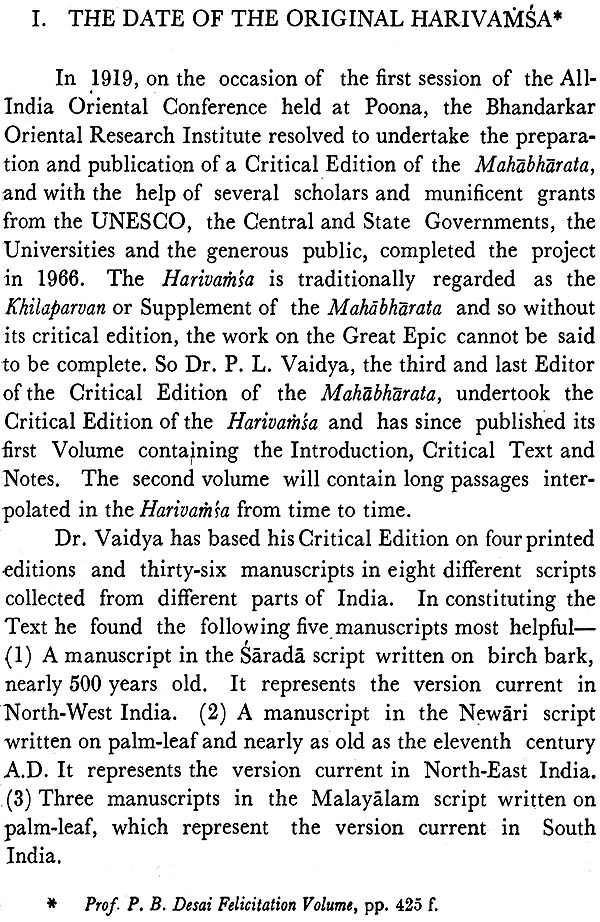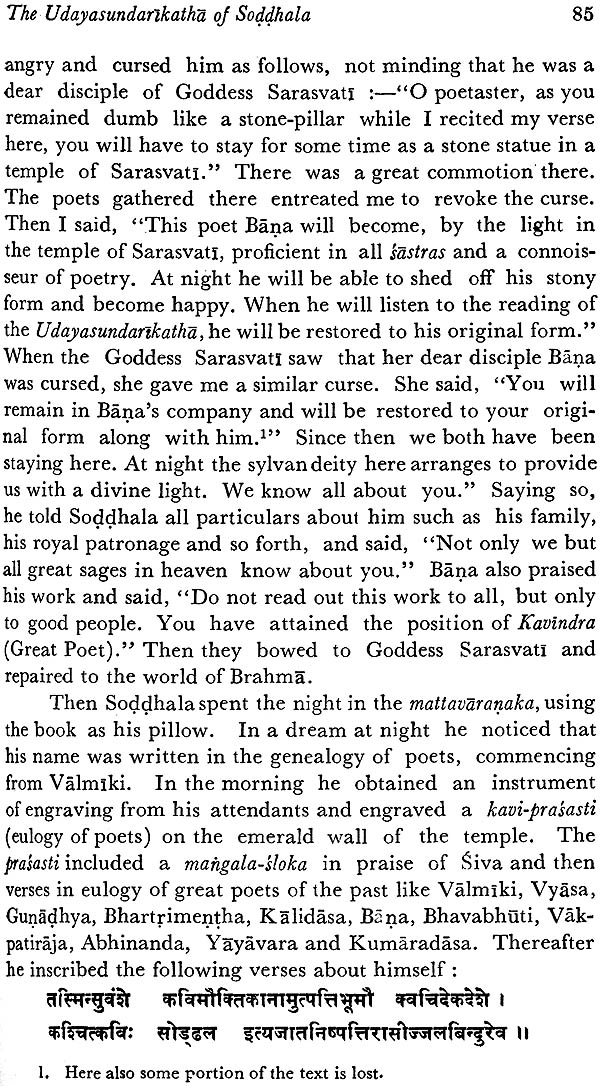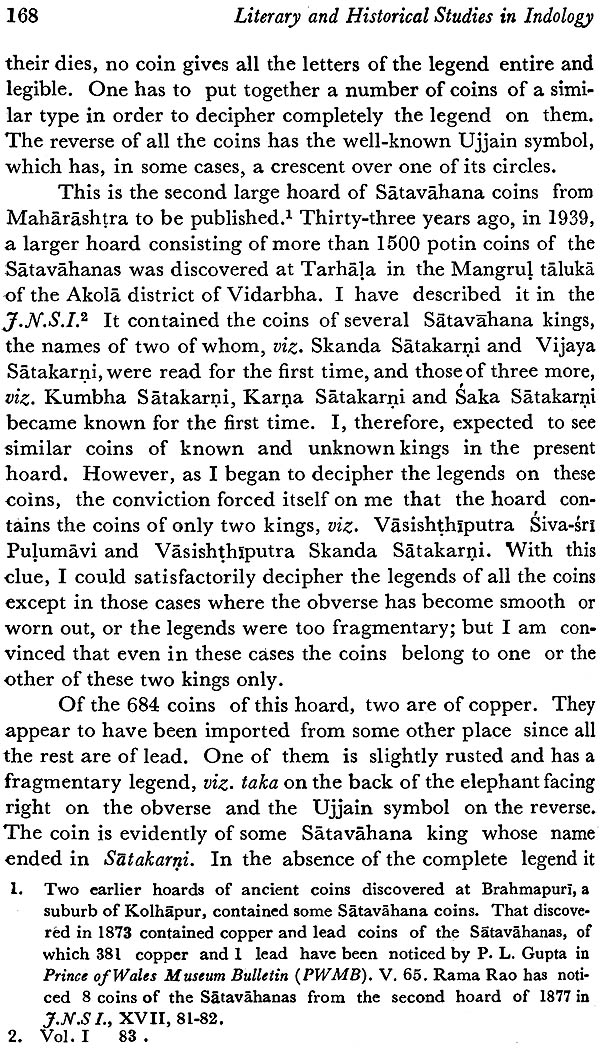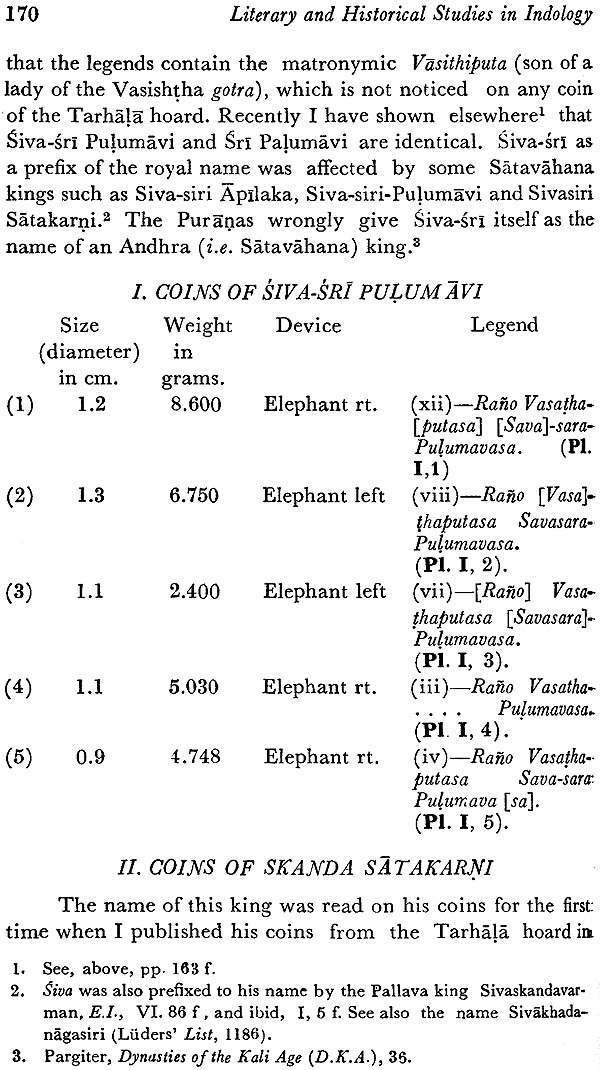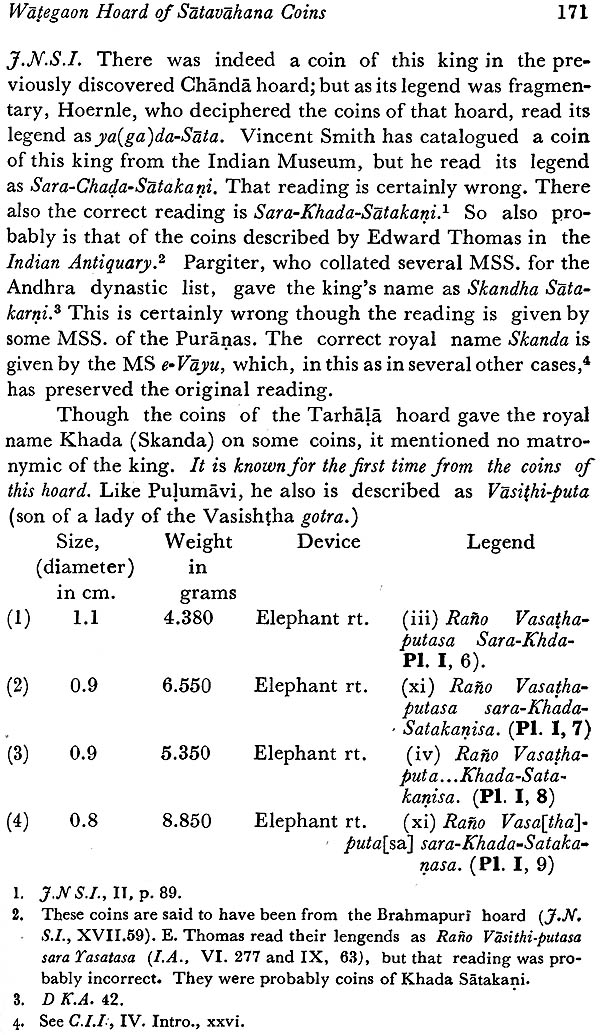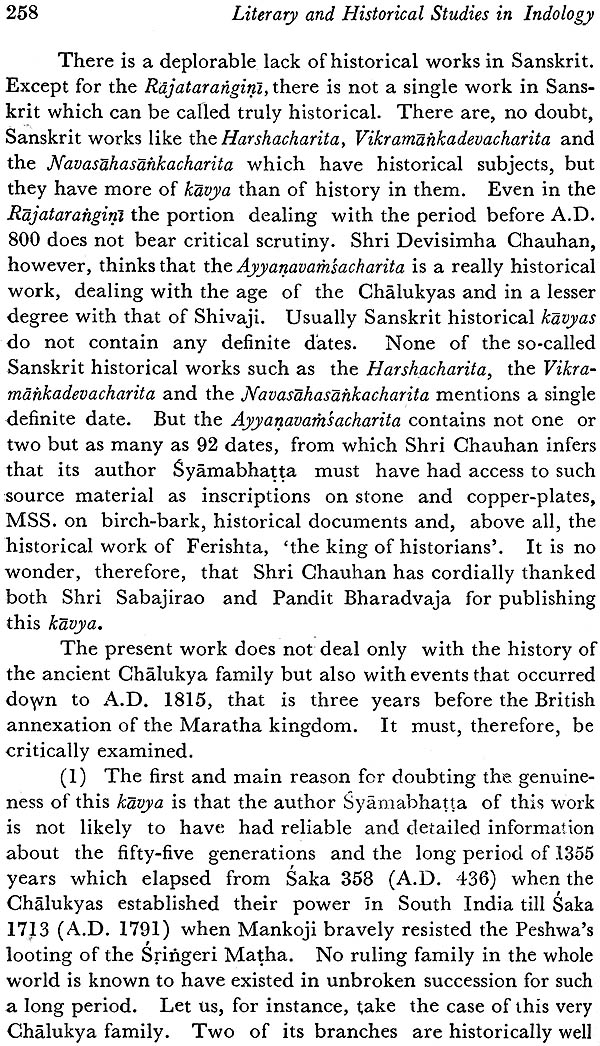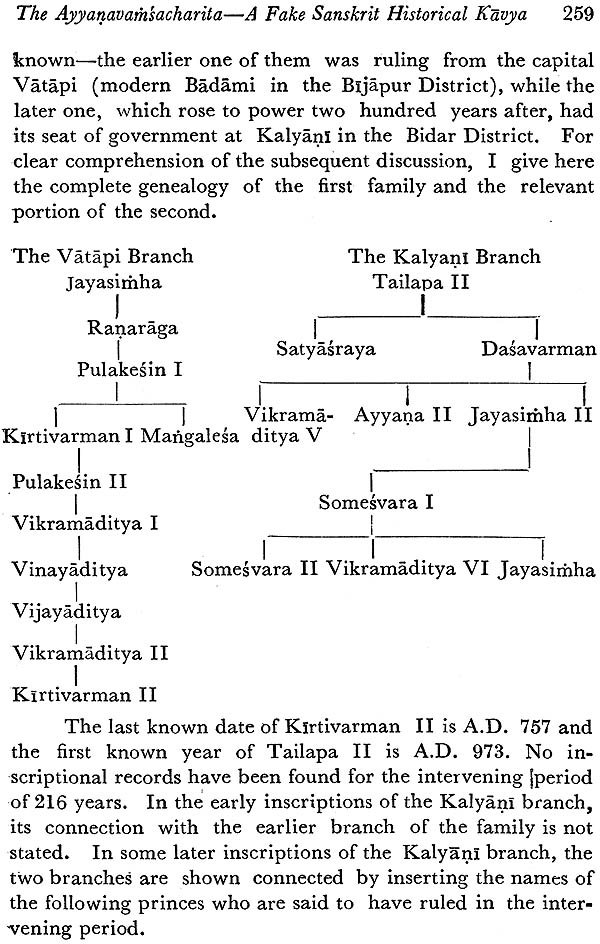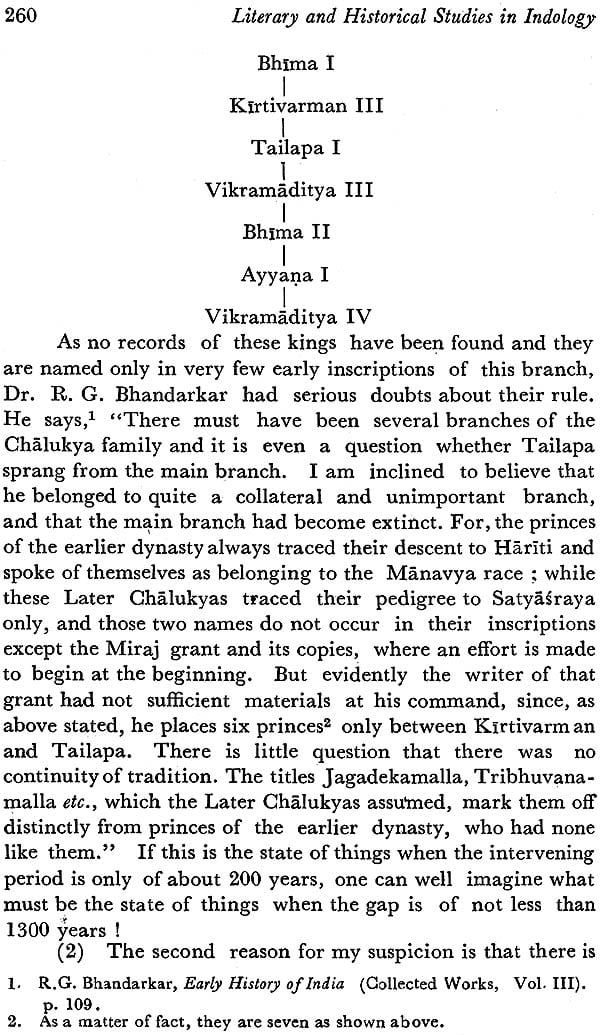
Literary and Historical Studies in Indology
Book Specification
| Item Code: | IDG656 |
| Author: | V.V. Mirashi |
| Publisher: | MOTILAL BANARSIDASS PUBLISHERS PVT. LTD. |
| Edition: | 1975 |
| ISBN: | 8120804171 |
| Pages: | 287 |
| Cover: | Hardcover |
| Other Details | 8.9" X 5.8" |
Book Description
About the Book:
This is the fifth collection of the research articles of Dr. Mirashi, dealing with various problems of Sanskrit literature, ancient Indian history, art and architecture. It contains twenty-seven articles grouped in four sections.
Section I deals with problems presented by several Sanskrit works, namely the lower limit of the date of the Original Harivamsa, the identification of kalapriyanatha mentioned in Bhavabhuti's plays, the date of Dvisandhana Kavya and the Namamala, the identification of the author of the Kundamala and the fixation of his date, the historical background of Rajasekhara's Viddhasalabhanjika etc. It gives also for the first time a detailed account of Soddhala's Udayasundarikatha, which though discovered more then fifty years ago, has not received the attention it deserves. Finally, the much discussed technical term Mattavarani has received here a new interpretation suggested by a critical examination of Bharata's Natyasastra.
Section II has seven articles which discuss various controversial problems presented by the history of the Guptas, the Traikutakas, the Vishnukundins and the Silahars of North Knokan. They either throw more light on the sources previously discovered or correct some erroneous views about them held so far.
Section III describes the coins in some hoards, discovered recently, of the Satavahanas, Kshatrapas and Traikutakas, and reiterated the previous readings and interpretation of Mahisha coins after examining critically the objections raised against them.
Section IV contains five articles on various subjects such as the location of Ravana's Lanka (which has recently become controversial), the religious denomination of the Caves at Dharasiva, the dated of the Mahalakshmi temple at Kolhapur and the Siva temple at Markandi etc. The last article shows how the recently published so-called historical work-the Ayyanavamsa-charita-is a modern forgery.
About the Author:
Dr. Vasudev Vishnu Mirashi is Regarded as one of the foremost living Indologists. He was appointed to the Sanskrit chair at the Morris College, Nagpur, in 1919 after a brilliant academic career in the University of Bombay. He was appointed Principal of the Morris College, Nagpur, in 1942, and served as Principal of the Vidarbha Mahavidyalaya, amraoti, from 1947 to 1950. He worked as Hon. Professor of Ancient Indian History and Culture and Head of the Department of Post-graduate Teaching (Humanities), Nagpur University, from 1957 to 1966. He has written nearly thirty research works in English, Marathi and Hindi, and more than 275 papers in various Indological journals. Dr. Mirashi's Major works. Viz., Inscriptions of the Kalchuri-Chedi Era and Inscriptions of the Vakatakas have been published in the famous Corpus Inscriptionum Indicarum Series of the Archaeological Survey of India. One more Volume, viz., Inscriptions of the Silaharas in the same Series, is now under print. Some of his other works are studies in Indology, Vols. I to IV, Kalidasa and Bhavabhuti.
Dr. Mirashi has received several high academic honours for his learning and research. He was honoured by the Viceroy of India with the title of Mahamahopadhyaya in 1941. The Universities of Saugar and Nagpur awarded their highest degree of D. Litt., honoris causa, to him in 1958 and 1960 respectively. He was elected General President of the All-India Oriental conference (1959), the Indian History Congress 1961), and the Numismatic Society of India (1951). The Numismatic Society of India elected him as Hon. Fellow in 1959, and the Epigraphical Society of India in 1974. The President of the Indian Union awarded him a Certificate of Honour with a life-pension for proficiency in Sanskrit learning in 1966. He received the unique honour of being nominated as Honorary Correspondent to the Archaeological Survey of India in 1972. The Sahita Akademi of India elected him its Hon. Fellow in 1974, and the President of the Indian Union conferred on him the honour of Padmabhusana in 1975.
This is the fifth Volume of my research articles dealing with various problems of Sanskrit literature, ancient Indian history and culture, numismatics, art and architecture, written during the last ten years. It is being issued under a slightly different title.
The present Volume contains twenty-seven articles grouped under four Sections. The first Section has nine articles. The first of them attempts to fix a lower limit for the date of the original form of the Harivamsa, the Khila-parvan of the Mahabharata. This parvan of the Great Epic received additions from time to time. A critical edition of it has recently been published by the Bhandarker Institute. But the MS. evidence of its age does not go back to an earlier date than the 11th cen. A.D. It has now been proved on inscriptional and literary evidence that the Constituted Text of this Khila-parvan is at least as old as A.D. 200. One of the subsequent articles (No. III) adduces additional evidences for the identification of Kalapriyanatha mentioned by Bhavabhuti from that poet’s own plays. The date of Dhananjaya, the author of the Divsandhana or Raghavapandaviya Kavya, had long been a matter of keen controversy. It is now shown in Article No. IV that he flourished as early as the latter half of the eighth cen. A.D. Another work of this author, viz. the Namamala is next shown to be earlier than the famous Namalinganusasana or Amarakosha. The author and the date of the play Kundamala had long become quite controversial. I have stated my views on them in the previous Volumes of my Studies in Indology. In the next (No. VI) article I have examined in detail the arguments advanced against them and shown them to be ill founded. The historical background of Rajasekhara’s Viddhasalabhanjika was variously interpreted. Article No. VII shows its correct interpretation. Soddhala’s Udayasundarikatha, though published more than fifty years ago, had not received the attention it deserves from scholars. Article No. VIII gives detailed information about it. The last article in his Section discusses the real meaning of the technical term mattavarani used in Bharata’s Natyasastra.
The second Section deals with some problems of ancient Indian history. It contains seven articles. The historicity of Ramagupta has now been proved by unimpeachable evidence; but some incidents in his career are still baffling. Article No. XI tries to clarify them. The next two articles (XII and XIII) discuss problems presented by some newly discovered copper-plate grants of the Traikutakas and the Vishnukundins. It has has almost been unanimously held that the Silahara king of North Konkan who was killed in the invasion of Somesvara I was Mummuni. Article No. XV shows that this is an erroneous view and that the king who succumbed to the attack was his elder brother Nagarjuna. Finally, the last article (XVI) gives an incomplete but interesting copper-plate grant of the Yadava king Ramachandra.
Section III contains six articles on the readings and interpretations of some newly discovered coins of the Satavahanas, Mahishas, Kshatrapas, Traikutakas and Vishnukundins. They have yielded valuable information about the ancient history of Western Maharashtra, Vidarbha and Andhra.
Section IV contains five articles. They deal with some questions which have recently become controversial such as the location of Ravana’s Lanka, the religious affiliation of the caves at Dharasiva, and the age of the Markandi temples. The last article (XXVII) tears off the mask from the fake Sanskrit historical Kavya Ayyanavamsacharita.
Many of the articles in the present Volume were published from time to time in Felicitation Volumes and Research Journals, but some of them are new. I am thankful to the Editors of the Volumes and Journals where they were published, for permission to reprint them. My thanks are also due to M/S. Motilal Banarsidass, Delhi, for having undertaken the publication of the present Volume and having done it expeditiously.
| PREFACE | ix | |
| ABBREVIATIONS | xi | |
| Articles :
| ||
| Section I-Sanskrit Literature
| ||
| I. | The Date of the Original Harivamsa | 3 |
| II. | A Note on the Subhashitartankaranadakakatha of Aryasura | 16 |
| III. | Fresh Light on the Identification of Kala-priyanatha | 19 |
| IV. | The Dvisandhana Or Raghavapandaviya Kavya of Dhananjaya | 24 |
| V | The Namamala of Dhananjaya | 47 |
| VI. | The Author and the Date of the Kundamala | 54 |
| VII. | Identification of Virapala in the Viddhasalabhanjika | 61 |
| VIII. | The Udayanasundarikatha of Soddhala | 71 |
| IX. | Mattavarani
| 92 |
| Section II-Ancient Indian History and Culture
| ||
| X. | Is Vijaya mentioned in the Nagagrjunakonda Inscriptions the Name of a Cyclic Year? | 103 |
| XI. | Some Aspects of the Ramagupta Problem | 109 |
| XII. | The Riddle of the Matvan Plates of the Traikutaka King Vikramasena : Saka Year 284 | 125 |
| XIII. | Fresh Light on two New Grants of the Vishnukundins | 131 |
| XIV. | Location of Vardhamanapura mentioned in Jinasena's Harivamsa | 139 |
| XV. | New Light on the History of the Silaharas of North Konkan | 145 |
| XVI. | An Odd Copper Plate of the Yadava King Ramachandra
| 154 |
| Section III-Numismatics
| ||
| XVII. | The Identity of Satavahana King Siva Sri Pulumavi | 163 |
| XVIII. | Wategaon Hoard of Satavahana Coins | 167 |
| XIX. | Two Kshatrapa Coins from Vidarbha | 176 |
| XX. | Dahigaon Hoard of Kshatrapa and Traikutaka Coins | 180 |
| XXI. | The Find of a Vishnukundin Coin Near Nagpur | 185 |
| XXII. | Numismatic Notes
| 188 |
| Section IV-miscellaneous
| ||
| XXIII. | location of Ravana's Lanka | 205 |
| XXIV. | Are the Caves at Dharasiva Buddhist or Jaina? | 220 |
| XXV. | Who Built the Temple of Mahalakshmi at Kolhapur and When ? | 233 |
| XXVI. | The Date of the Markandi Temples | 239 |
| XXVII. | The Ayyanavamsacharita : A fake Sanskrit Historical Kavya
| 256 |
| Index
| 268 | |
| Errata | 278 |
